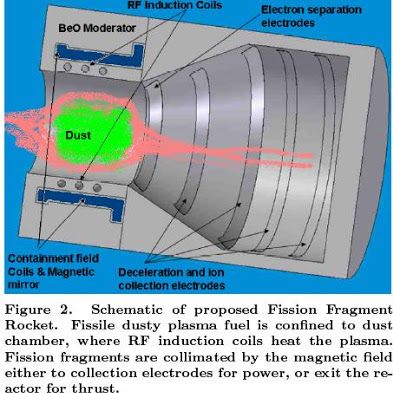Further improvements in nuclear propulsion system efficiency beyond nuclear-electric (NEP) are possible. The fission process accelerates the fission fragments to velocities between 3–5% of the speed of light, far faster than the 0.027% achieved by NEP, which uses a conventional nuclear reactor to convert the kinetic energy of the fission fragments into heat, the heat into electricity, and the electricity back into Xe ion kinetic energy with eficiencies much less than 40%. In the fission fragment reactor, the high-speed fragments are used directly as the rocket exhaust after charge neutralization. Therefore the fission fragment rocket can produce a specific impulse (Isp) greater than one million seconds.[CR][CR]Previous concepts suRered from impractical or inadequate methods to cool the fission fuel. In this work the heating problem is overcome by dividing the solid fuel into small dust particles and thereby increasing the surface to volume ratio of the fuel. The small size of the fuel particle allows adequate cooling to occur by the emission of thermal radiation.
Dusty Plasma Based Fission Fragment Nuclear Reactor
Posted in computing, nuclear energy
